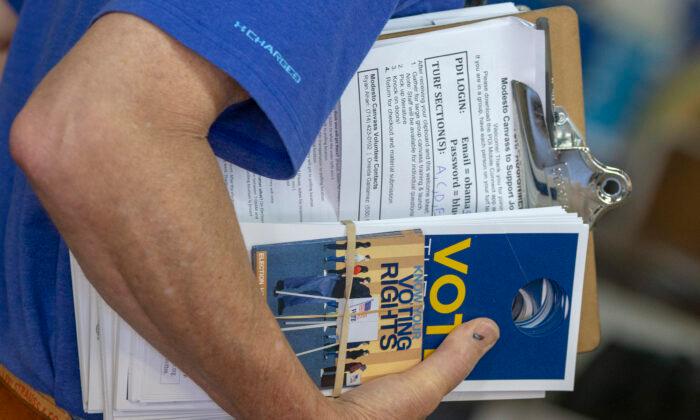There’s a lot to unpack in that remark. Very few Republican politicians in California will openly say what most Republican voters in California believe, which is that despite his imperfections as a politician and peccadillos as a man, Donald Trump’s policies are mostly sound.
Until Republican politicians are willing to walk that tightrope, Garofoli’s words present a fatal paradox. How can you promote meaningful solutions that match the scale of California’s problems, if every solution you offer is either “Trumpian,” because Trump would avidly support it, or tepid, because only tepid solutions escape Trump’s endorsement?
After all, it was Trump who was willing to remind America that climate change hysteria, and the attendant fascist transitions being imposed to combat the alleged crisis, is based on what remains a theory filled with holes. It was Trump who suggested we thin the forests the way they do in Scandinavia and was mocked for his supposed stupidity. Pick any big idea full of common sense that will stop the Democratic machine that feeds on failure, and Trump has probably said it.
But even if Trump hasn’t gone on the record to say, for example, we need to bring back the timber industry if we’re serious about stopping forest fires, or that denying the sale of advanced hybrid cars by 2035 is short-sighted and draconian, or that we must retain SAT scores as the primary criteria for college admissions, or that we should resume drilling for oil and gas in California, or that parents should be able to choose which school their children attend, these are things that Trump would say if you asked him, and therefore they are toxic, racist, climate denying, dangerous sentiments, dead on arrival in this enlightened state.
If these proposals are doomed, a few questions are pertinent going forward. First, would they make things better for Californians if all of them were passed by the legislature and signed by the governor? The answer to that is unequivocally yes, even though there is much more that can be done. Which raises a logical follow-up question: If these relatively moderate solutions are nonetheless symbolic, what assortment of solutions would be more likely to excite enough voters to flip the legislature and politically realign the state?
To be fair, and from taking a close look at the proposals that constitute The California Promise, that’s a tough question. It’s easy enough to say the biggest problem with gasoline prices isn’t the gas tax, it’s the regulations that have constricted the supply of gasoline, which dramatically raised prices, so therefore prioritize deregulation and worry about the gas tax later. Why save $0.50 per gallon with a gas tax holiday, when you can save $2.00 a gallon with deregulation? What’s not easy, however, is to endure the blowback from the entire environmentalist/refinery industrial complex. The environmentalists want no gas. The refiners want super expensive gas. Thread that needle.
Assemblyman Gallagher’s solution to homelessness, regional shelters, is the only thing that’s going to get them off the streets. But notwithstanding the mortal threat such a solution presents to the homeless industrial complex, and the allegations it invites that Gallagher wants to build concentration camps, any solution of this sort would have to impose a per-bed cost ceiling. Otherwise the leeches that have already squandered billions will just adapt to find a new and equally profitable way to perpetuate the scam and prevent resolution.
The California Promise has good ideas on public safety. Restoring pre-Prop. 47 felonies might even be something the GOP can sell to the majority Democrats. Similar potential may exist with some of their education proposals, especially Assemblyman Hoover’s proposal to expand vocational education programs. With vocational jobs now often paying more than jobs requiring college degrees, and a serious shortage of skilled workers, this proposal is a winner.
As for fire safety, a proposal to subsidize a restoration of California’s biomass power capacity will not hurt. Biomass power is baseload power, unlike most other renewables, and it doesn’t cost any more than the fully loaded cost for solar or wind energy. So why not? As for the proposal to increase wildfire emissions reporting, that’s a nice in-your-face reminder to the climate change zealots as to where most of the CO2 is coming from, but it won’t help the forests, and it won’t stop the zealots. A better proposal, probably futile, would be to bring back California’s timber industry, which harvests less than one quarter what it harvested in the 1990s. If you want to prevent wildfires, you have to thin the tinderbox. It’s that simple.
As a movement, The California Promise has potential. It can morph and evolve, cohering into a comprehensive alternative for voters, earning the support of all GOP politicians and offering a platform for all GOP candidates. Whether it veers into Trumpian territory or not, it will earn the enmity of Democrats and their captive press. But with unity and a commitment to solutions, it can make the difference if it becomes a perennial effort and not a one-time stunt. To get to that next level requires investment and leadership. Is the California GOP prepared to do that?





